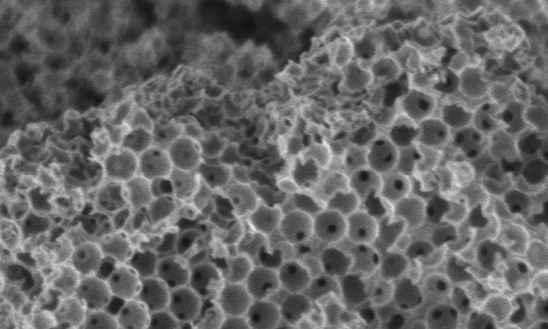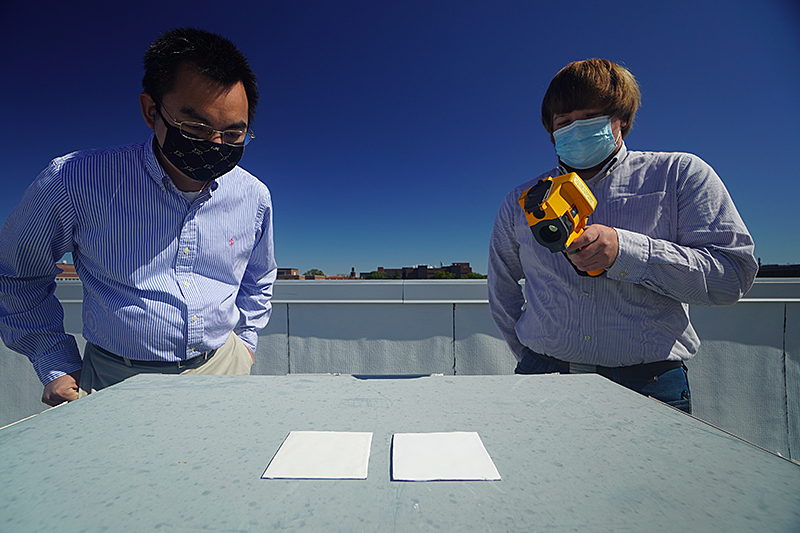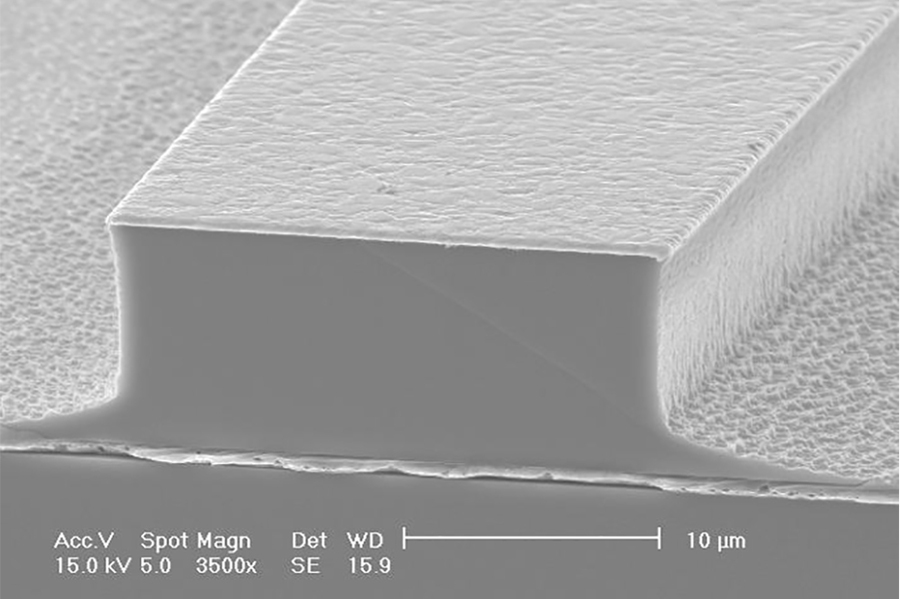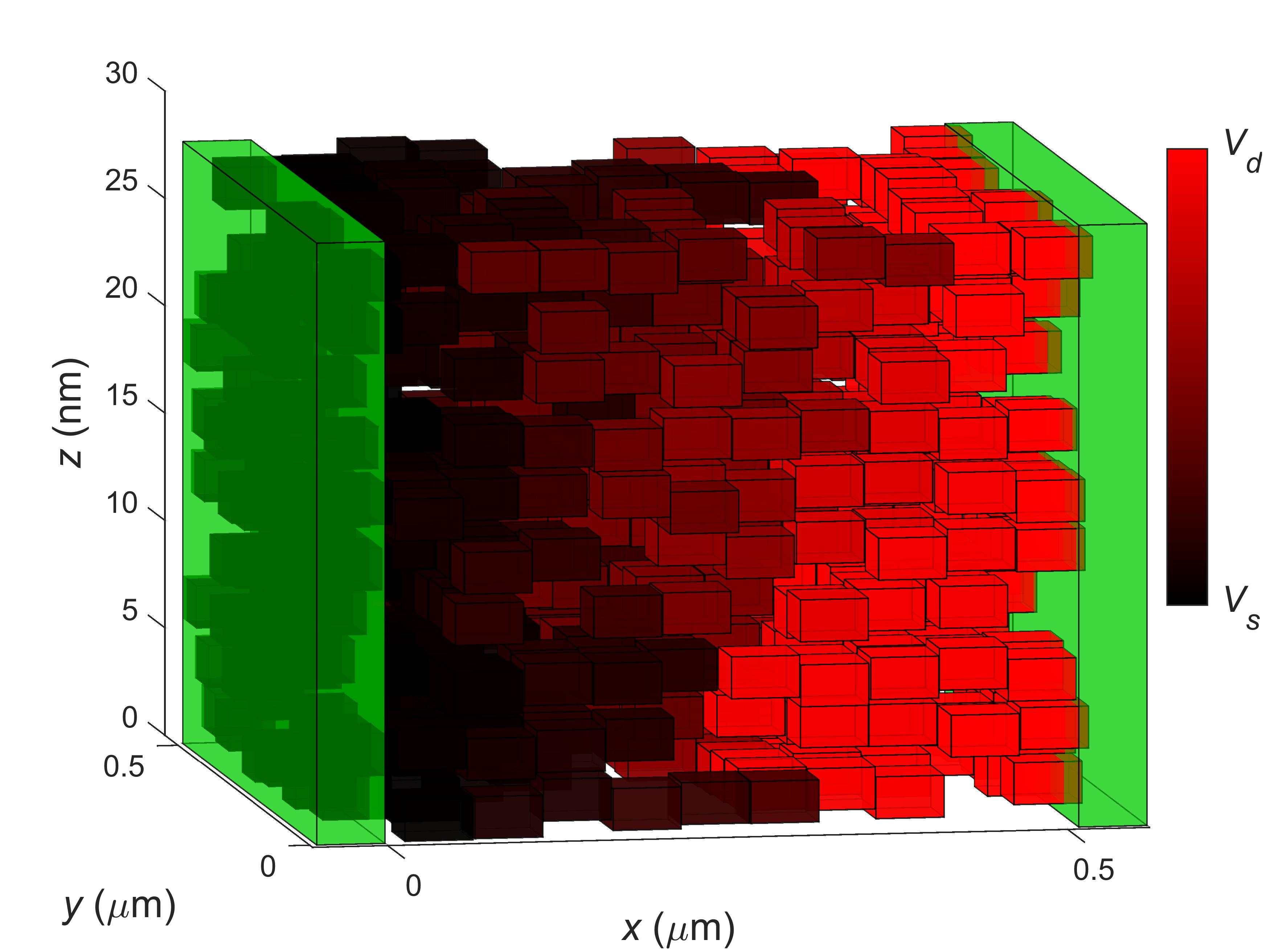Researchers found a low-energy way to take used cooking oil and turn it into biodiesel, developed a funky new white paint that dramatically lowers the temperature of surfaces it’s applied to, and figured out how promising two-dimensional materials like graphene can be incorporated into inks for 3D printing. As the philosopher once said: We’re living in a material world. These are the week’s coolest scientific achievements.

What is it? At Australia’s RMIT University, researchers developed a low-cost method for turning used cooking oil and agricultural waste into biodiesel and other high-value products.
Why does it matter? Current processes to convert scraps and oil — known as feedstock — into usable fuel can only handle feedstock with less than 2% contamination; the waste first has to undergo an energy-intensive cleaning process. The process developed by RMIT researchers, by contrast, can handle feedstock that contains up to 50% contaminants. According to a university news release, it’s so efficient that “it could double the productivity of manufacturing processes for transforming rubbish like food scraps, microplastics and old tires into high-value chemical precursors used to make anything from medicines and fertilizers to biodegradable packaging.”
How does it work? Described in Nature Catalysis, the process relies on a tiny — 100 times thinner than a human hair — ceramic sponge with several specialized components in it. When molecules enter the sponge, passing through large pores and then smaller pores, they undergo two chemical reactions. Researcher Karen Wilson said the process was inspired by nature: “Our bio-inspired approach looks to nature’s catalysts — enzymes — to develop a powerful and precise way of performing multiple reactions in a set sequence. It’s like having a nanoscale production line for chemical reactions — all housed in one tiny and super-efficient catalyst particle.”

What is it? A trippy new white paint developed by engineers at Purdue University can keep surfaces 18 degrees Fahrenheit cooler than the temperature of the air that surrounds them, possibly eliminating the need for buildings to be air-conditioned.
Why does it matter? The paint could chill individual buildings, reducing energy bills and carbon footprints. It could also make the Earth’s surface cooler, researchers say, if painted widely on surfaces like roads and rooftops.
How does it work? Engineers have long sought to develop heat-rejecting paints as an alternative to AC, but the ones on the market today reflect only about 80% to 90% of the sunlight that hits them, and they can’t be cooler than their surroundings. The paint created at Purdue is made with calcium carbonate and reflects 95.5% of sunlight. According to the university, “the calcium carbonate fillers absorb almost no ultraviolet rays due to a so-called large ‘band gap,’ a result of their atomic structures.” The paint is described further in Cell Reports Physical Science.
What is it? An experimental machine to produce fusion power has just been switched on in the U.K. for the first time.
Why does it matter? Nuclear fusion has long been regarded as a way to provide a basically limitless amount of clean energy to the grid — if its potential can be realized.
How does it work? Whereas nuclear fission involves the splitting of atoms — the process harnessed by nuclear power plants , nuclear fusion works by slamming two atoms together to form a larger atom, in the “same process that powers the sun.” Physicists at the U.K.’s Culham Centre for Fusion Energy have spent the last seven years building the Mega Amp Spherical Tokamak Upgrade, a forerunner of a larger prototype due to be built by 2040. The tokamak, as the BBC explained, “is a fusion device that uses magnetic fields to confine the plasma — hot, ionized gas — inside a vessel. This plasma allows the light elements to fuse and yield energy.” Tokamaks are typically shaped like doughnuts, but the MAST Upgrade is more spherical, possibly pointing the way toward compact fusion power plants.

What is it? Scientists at MIT and Ontario’s University of Waterloo developed a high-powered, portable laser that could detect skin cancer, hidden explosives, and more.
Why does it matter? The system has a compact camera as well as a detector. In hospitals, for instance, it could be used to detect skin cancer during regular screenings, or by surgeons as they operate, to help pinpoint cancerous tissue. It could also detect drugs, gases or explosives, said engineering professor Qing Hu: “Not only can we see objects through optically opaque materials, but we can also identify the substances.”
How does it work? The device is a version of what’s called a quantum cascade laser, machines that generate terahertz radiation and typically require temperatures colder than -100 degrees Fahrenheit — and, therefore, bulky cooling components. Hu and colleagues found a way to make a terahertz quantum cascade laser work at just -10 degrees, a temperature that can be attained using only a compact portable cooler. They explain the technology in Nature Photonics.

What is it? Researchers at the U.K.’s University of Nottingham have gotten a step closer to being able to 3D-print “novel electronic devices with useful properties, such as an ability to convert light into electricity.” It involves the supermaterial graphene, which is stronger than steel, flexible, and a terrific conductor of electricity.
Why does it matter? Lyudmila Turyanska, a researcher at Nottingham’s Centre for Additive Manufacturing and the co-author of a new paper in Advanced Functional Materials, said, “The findings could be employed to make a new generation of functional optoelectronic devices; for example, large and efficient solar cells; wearable, flexible electronics that are powered by sunlight or the motion of the wearer; perhaps even printed computers.”
How does it work? The paper explores how tiny flakes of graphene, which is typically arranged in a flat sheet and can only be layered in a painstaking process, can be suspended in inks that can be printed into three-dimensional structures. The answer has to do with quantum mechanics, as Turyanska’s colleague Mark Fromhold explained: “According to the laws of quantum mechanics, in which the electrons act as waves rather than particles, we found electrons in 2D materials travel along complex trajectories between multiple flakes. It appears as if the electrons hop from one flake to another like a frog hopping between overlapping lily pads on the surface of a pond.”





